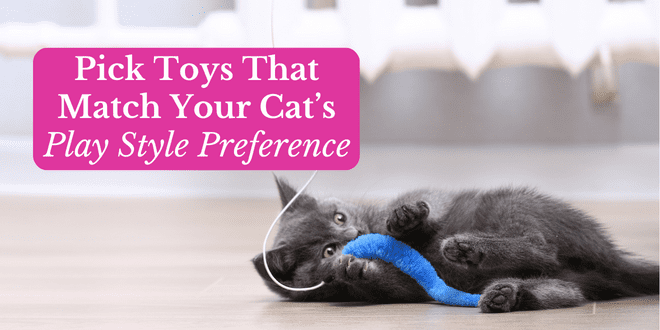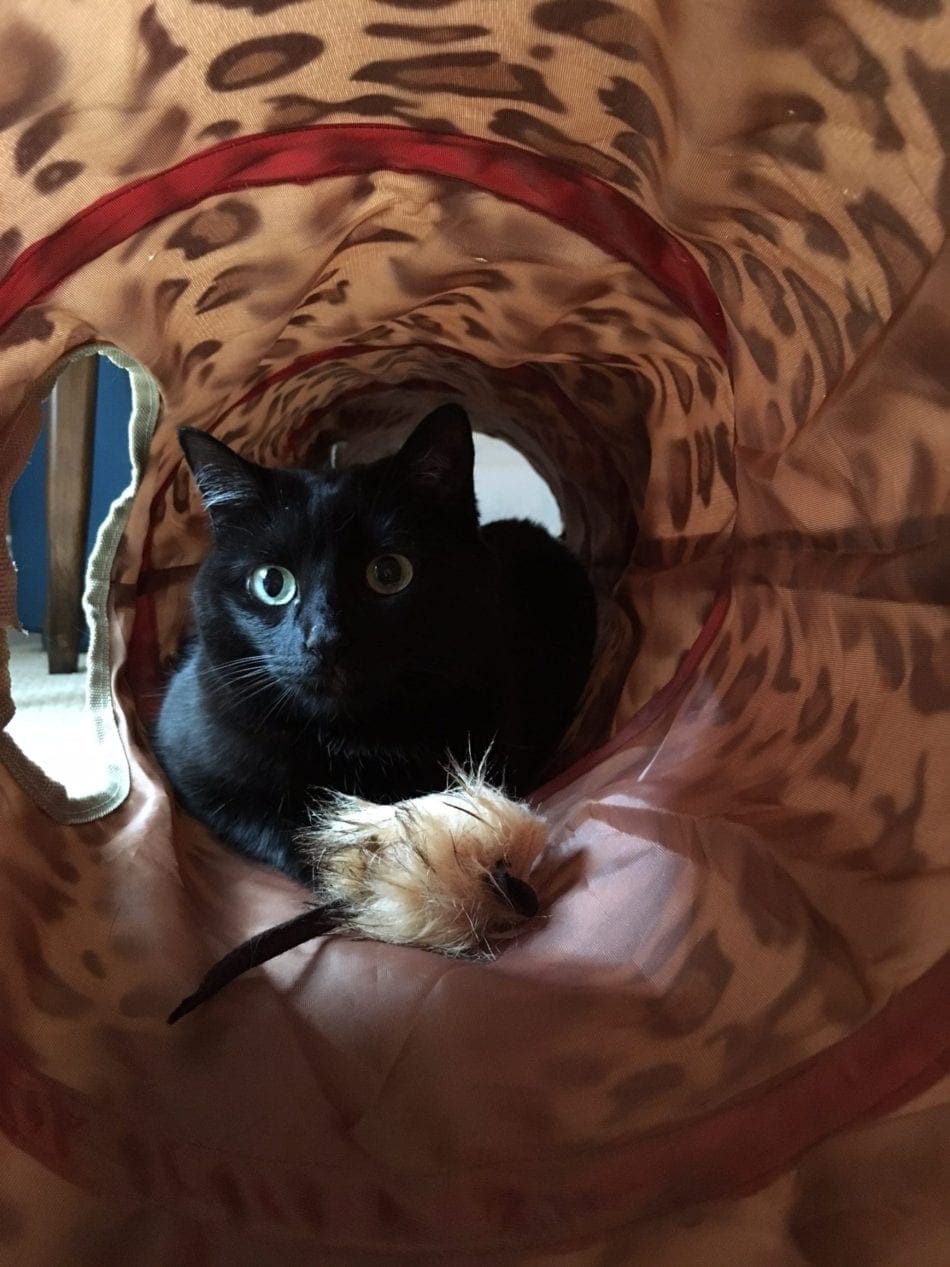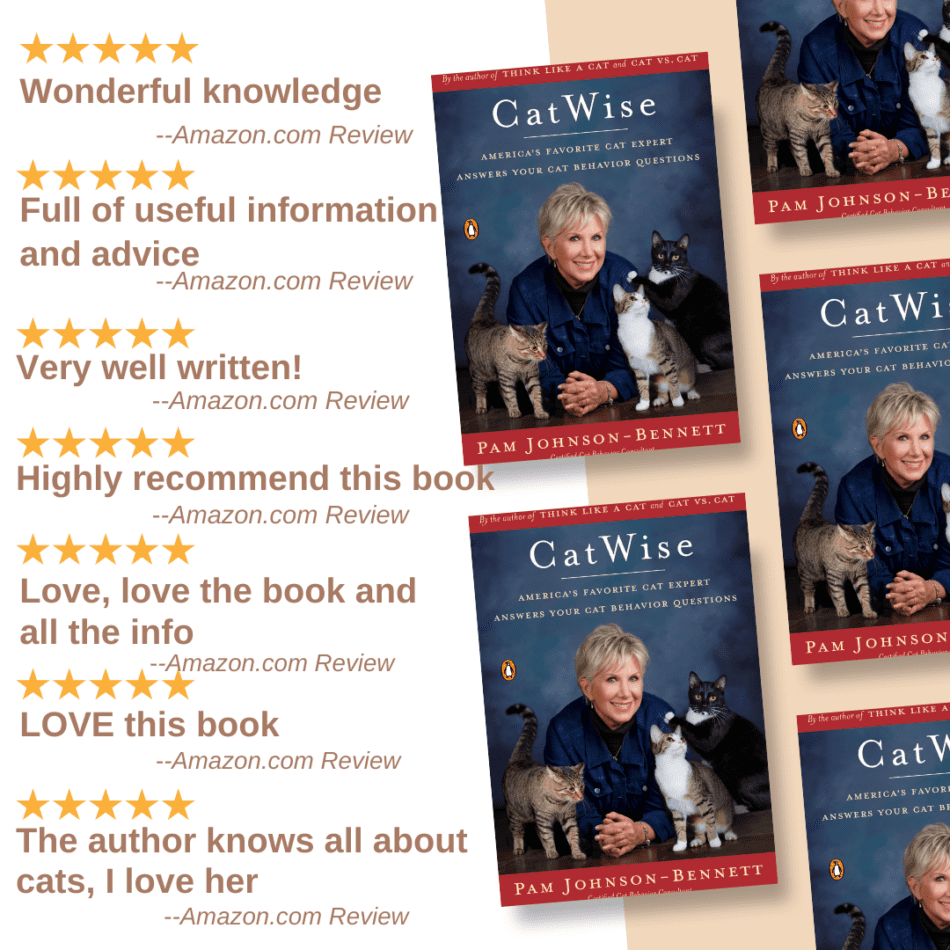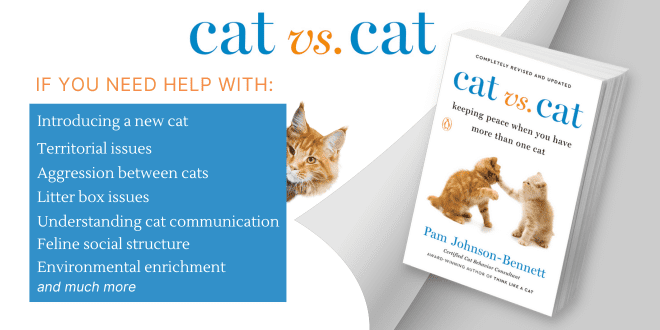
In a previous article I covered tips on choosing the right toy for your cat. Several factors go into making that decision such as your cat’s general personality, mobility, texture preferences, size, shape, and sound preferences. That article can be accessed here:
Choosing the Right Toys for Your Cat
In this article let’s talk more in-depth about play techniques and how a cat’s hunting preference (even if the cat doesn’t go out to actually hunt) can influence the success or failure of a particular toy.
Get to Know Your Cat’s Preferred Prey
Many cats will go after anything and everything that moves as long as it’s not so large that it would be viewed as an opponent instead of prey. That prey could be a bird or butterfly in flight, a cricket hopping along, a lizard darting around, a mouse skittering from hiding place to hiding place, or a little snake inching its way out of sight. Each creature may require adjustments in how the cat would seize the intended target.
Some cats though, have preferences when it comes to the type of prey/toy. The cat may be excellent at going after birds and even getting one as it begins to fly or land. Another cat may do best sticking to prey that can only move horizontally.
In addition to knowing what toys are safest for your cat and addressing texture, size, shape, and sound preferences, it’s also important to move those toys in the most enticing way. That’s where it matters whether your cat has a particular play preference so you can make better toy purchases and you can conduct the most irresistible interactive sessions.
Is Your Cat a Ground Hunter?
Your cat may prefer going after prey/toys that only stay close to the ground. It could be kitty feels he can stay hidden more effectively that way while inching toward the target, or it may be due to limited physical mobility. An overweight cat may know it takes less effort to go after prey limited to horizontal movement. If you’re trying to build trust with a frightened or timid cat, he might feel too vulnerable to leap up in the air and come too far out of hiding. Pay attention to how your cat reacts when the movements of the toy go vertical. If your cat loses interest, it may not be he dislikes the toy itself, it may just mean a dislike for the way you’re moving it.
Is Your Cat Good at Being an Air Hunter?
When you play with your cat does he really enjoy the toy movements that include going up in the air? Interactive toys based on a fishing pole design (wand with a string and a toy dangling on the end) are great for making both ground and air movements. In addition to stalking along the ground and pouncing, the cat who enjoys air hunting will incorporate leaps and mid-air captures.
In-the-air hunting may be something your cat has always enjoyed doing, regardless of age. It could also be something that was enjoyable when he was younger, had less joint pain, or was thinner, but has now become too much of an effort. Play style preferences can change as a cat ages or experiences less mobility, sensory decline, age-related cognitive decline, or increased pain. If your cat was always an athletic air hunter and has recently shown less interest in playtime, first, have your cat seen by the veterinarian to identify any undiagnosed medical problem, but also, make adjustments in your technique to accommodate. It may be time for more horizontal movements.
Even enthusiastic air hunters will appreciate some ground movements so he can stalk and pounce. Don’t make all the toy’s movements over your cat’s head. Additionally, when waving the toy in the air, don’t continually keep it out of reach. If the toy becomes impossible to catch, your cat may lose interest or possibly get hurt while wildly leaping in the air. Playtime should be challenging but it also needs to be fun. If your cat never gets to enjoy successful captures, then all you’ll have accomplished is to physically exhaust and frustrate.

Photo: Pam Johnson-Bennett
Make Prey-like Movements with the Toy
In other words, think like prey so you can move the toy like prey. Movements should vary between fast and slow, hidden and seen. The toy should also not move at all at times or maybe just stay in one place and quiver a bit. When a cat hunts, it’s just as much mental as it is physical. A cat is an ambush predator and must make quick decisions and plan movements efficiently. The cat depends on stealth, speed, timing, and accuracy. If you keep the toy in constant motion, then your cat doesn’t have time to sneak up and plan an attack.
The Peek-a-Boo Cat
Some cats like to be out in open and right in the middle of the action during playtime while a more timid cat may prefer to remain hidden throughout most of the game. The cat may pounce and then dart back behind furniture or under the bed. If you have a peek-a-boo cat, set up boxes, bags, tunnels or other objects to provide extra cover.
Offer Playtime Variety
Even though your cat may have very strong playtime style preferences, things can change and he may start to enjoy other types of toys that allow for difference techniques. If your cat is a tried-and-true ground hunter because of fear, you may discover that as confidence increases, he may start to respond to vertical movements. A once overweight cat may also begin to enjoy some air play now that it’s more comfortable moving around. And, on the flip side, watch for signs indicating your air hunter is having difficulty and needs more horizontal playtime. The key is to keep playing with your cat, even if that means he will only paw at a toy while sitting on the floor or peeking out from behind a chair. Playtime is an important part of cat life. It’s a valuable tool for trust-building, maintaining good physical health, building confidence, easing boredom or depression, and keeping a lid on aggression.
Solo Playtime
In addition to the interactive play sessions that depend on your participation, your cat needs toys for solo playtime. In a previous article on choosing toys, I discussed paying attention to specific preferences a cat may have about texture, size, sound, and shape. Now, in terms of play style, you can use that information to strategically place toys for maximum fun. For example, if your cat enjoys more air hunting, how about placing a hanging toy in a doorway? Look for puzzle feeders that connect to the door-frame and swing freely for the cat to bat with his paws. Use your cat’s love for climbing to place toys on cat tree perches, window perches, shelving, or any other vertical location where kitty is allowed to go.
Cats who like to hunt by peeking into objects to look for treasure will appreciate toys hidden in paper bags or boxes. Since prey doesn’t typically lounge around out in the open, place some toys so just a little bit of them can be seen peeking out from behind furniture or under beds.
Where’s my Reward?
Some cats will stay more interested in playtime when there’s an actual food reward at the end. Puzzle feeders offer the dual benefit of providing playtime activity with a food reward. Food dispensing toys can also be beneficial for helping cats who tend to eat too fast or who are on a weight reduction program. The toys encourage activity and get cats moving instead of just hovering over a food-filled bowl in the kitchen. I also always offer my cat a little food treat after each interactive play session as a reward for a great hunt.
Make Toys Come to Life
No matter what your cat’s play style is, if solo toys are left to gather dust by being piled up in the toy basket in the corner or left strewn about on the carpet, playtime interest may decline. It only takes a few moments to move toys around to better positions before you leave the house for work in the morning. Maybe a toy that has lost its cat-appeal needs a little catnip treatment, or maybe it needs to be put away for a week while another toy is brought out. Rotating toys is a good way to maintain cat interest.
Have Fun
Interactive playtime is not only great for your cat, it’s wonderful for you. It’s an opportunity to relax, de-stress, laugh at your cat’s funny moves, and marvel at their skill. It’s also a way to help build trust and strengthen the bond you share. Don’t miss out on it by being too busy to play with your cat a couple of times a day. Take the time to learn play style preferences and interactive playtime will become something special for both of you.
Need More Information?
For more specifics on how to play with your cat or how to use playtime for behavior modification, refer to the best-selling books by Pam Johnson-Bennett. If you live with more than one cat, then check out the revised and updated edition of Cat vs. Cat, her best-selling books on managing multicat households. These are the books behavior experts, veterinarians, shelters and cat parents worldwide refer to as the cat bibles. All of the books by Pam Johnson-Bennett are available at bookstores and online. We’ve included links to Amazon here on our website.


